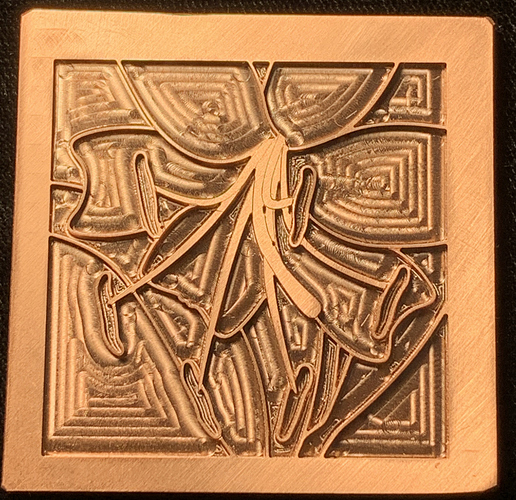Hi All,
New to the fourm here and hoping to soon be the owner of a Nomad 883! I run a small jewelry making business and for years having been looking for a way to produce my own custom shapes and designs in house and I think a small desktop milling machine will be an excellent addition to my shop. After much research, I think the Nomad is just what i’ve been looking for. I have a basic understanding of how cnc milling works but I’ve yet to actually see one in action beyond online videos so I was hoping I could get a little advice from folks who have experience with the machine. Basically what i’m hoping to achieve, at least in the beginning, is to cut out basic 2D shapes from relatively thin metal sheet. I realize there are many variables to consider like the complexity of designs, speeds and feed setting etc but I’m hoping to get an idea of the quality of the final pieces and how much finishing work will be involved after the pieces have been milled? Thanks so much!
What kind of thickness range are you involved with? It might be so thin that you would need a vacuum fixture to hold it while milling.
Right now I work mostly with .064’ and .080’ material because its what I usually have on hand. I figure i will be in for some trial and error to figure out the best way to hold the material in place.
Winston, as usual, has a pretty apt video for this.
Edit:
Since this video didn’t fully address some of the questions, I’ll try and take a stab at them. I made my wife a thing in aluminium and copper. Biggest thing I needed to do after pulling off from the machine, was round over the edges. Maybe some polishing work, but would’ve done that anyways, based on the sheet I had on hand.
Also if you haven’t check out the #nomad883pro tag on instagram. You’ll see people milling parts for watches and jewelry type applications as well. I’d say the machine is pretty great and quite capable, but it doesn’t take the human out of all the processes. It can certainly help automate tasks like cutting out fairly simply.
I’ll add this other example I found interesting and may be relevant: here
I do detailed inlay work, formerly in fretboards and headstocks of guitars, now in jewerly boxes. I’ve just begun to learn enameling using the Nomad to create the pockets for champleve. The Nomad is excellent for this. It is repeatedly precise for the inlay work, inlay and pockets match without resorting to the now popular v-carve methods. I’ve used bits as small as 0.178 mm and, now that I’ve trued the spindle, have confidence it will handle the smallest bit I’ve found, a 0.127 mm ball-end. I’ve cut silver, gold, 360 brass, C145 copper, mother of pearl, ebony, various plastics and more. I’ve also used the Nomad for drag engraving on MOP and copper.
This is my first test for champleve, the milled portion is 1.5" square. The shingling in the fields is exegerated in the photo. Some of the 0.30 mm pockets are uncut, the pockets are all 1.0 mm deep. The lines demarcating stamen were dragged, I will mill them next test to a depth of 0.2 mm.
Some inay the Nomad is capable of:
I appreciate everyone’s input so far and sharing their creations, that’s super helpful. I think i’m a long way off from attempting anything like that but thrilled to know with the right set up and tooling, the nomad is capable of some pretty intricate detail work That video of the carbide necklace being made is great, it was the first thing i saw that got me thinking about a milling machine in the first place. I was actually really impressed with how clean the finished piece looked.
Another concern i have is in regards to work holding. I know the fixture wax is a popular choice but I was wondering if anyone can recommend an alternative method? I hope to be able to mill out some shapes in volume and it seems like the wax will be a messy and time consuming process. I’ve read some people have had success with double sided tape? or does anyone make use of the threaded table accessory?
I’ve been using the heck out of masking tape on both the work piece and wasteboard with superglue between the two. The doublesided tape I’d buy was either not strong enough or would leave a residue that was a pain to get off the endmills/workpiece.
I also got the threaded table and the tiger claw clamps (which are amazing!), and I make use of that. With the threaded table you could do something like have a few holes in the sheet line up with holes on the threaded table. Might be worthwhile to have an MDF threaded table for that, so that you can punch through into the wasteboard without worrying too much about hitting aluminium.
This topic was automatically closed 30 days after the last reply. New replies are no longer allowed.
